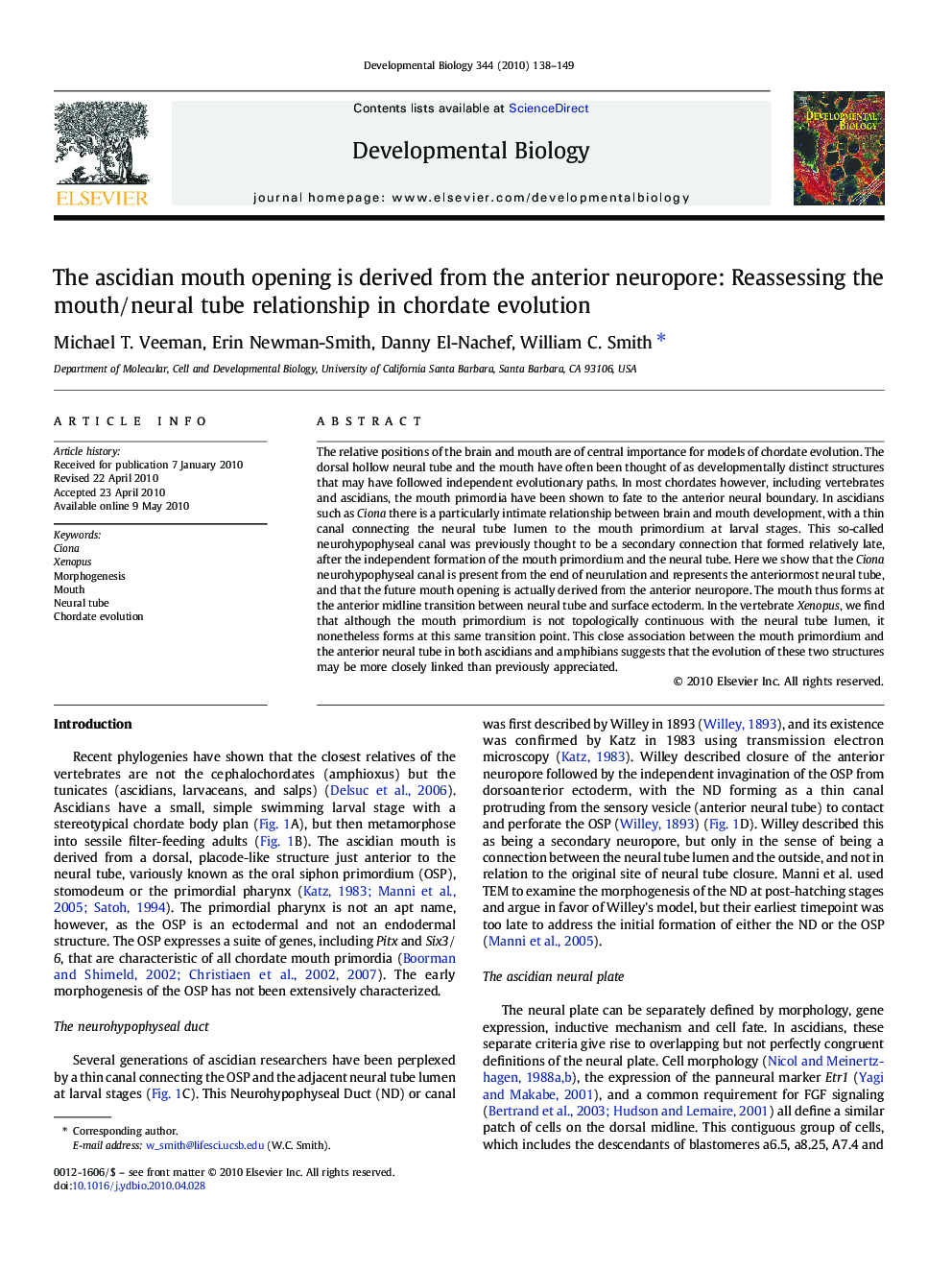| Article ID | Journal | Published Year | Pages | File Type |
|---|---|---|---|---|
| 10932859 | Developmental Biology | 2010 | 12 Pages |
Abstract
The relative positions of the brain and mouth are of central importance for models of chordate evolution. The dorsal hollow neural tube and the mouth have often been thought of as developmentally distinct structures that may have followed independent evolutionary paths. In most chordates however, including vertebrates and ascidians, the mouth primordia have been shown to fate to the anterior neural boundary. In ascidians such as Ciona there is a particularly intimate relationship between brain and mouth development, with a thin canal connecting the neural tube lumen to the mouth primordium at larval stages. This so-called neurohypophyseal canal was previously thought to be a secondary connection that formed relatively late, after the independent formation of the mouth primordium and the neural tube. Here we show that the Ciona neurohypophyseal canal is present from the end of neurulation and represents the anteriormost neural tube, and that the future mouth opening is actually derived from the anterior neuropore. The mouth thus forms at the anterior midline transition between neural tube and surface ectoderm. In the vertebrate Xenopus, we find that although the mouth primordium is not topologically continuous with the neural tube lumen, it nonetheless forms at this same transition point. This close association between the mouth primordium and the anterior neural tube in both ascidians and amphibians suggests that the evolution of these two structures may be more closely linked than previously appreciated.
Related Topics
Life Sciences
Biochemistry, Genetics and Molecular Biology
Cell Biology
Authors
Michael T. Veeman, Erin Newman-Smith, Danny El-Nachef, William C. Smith,
